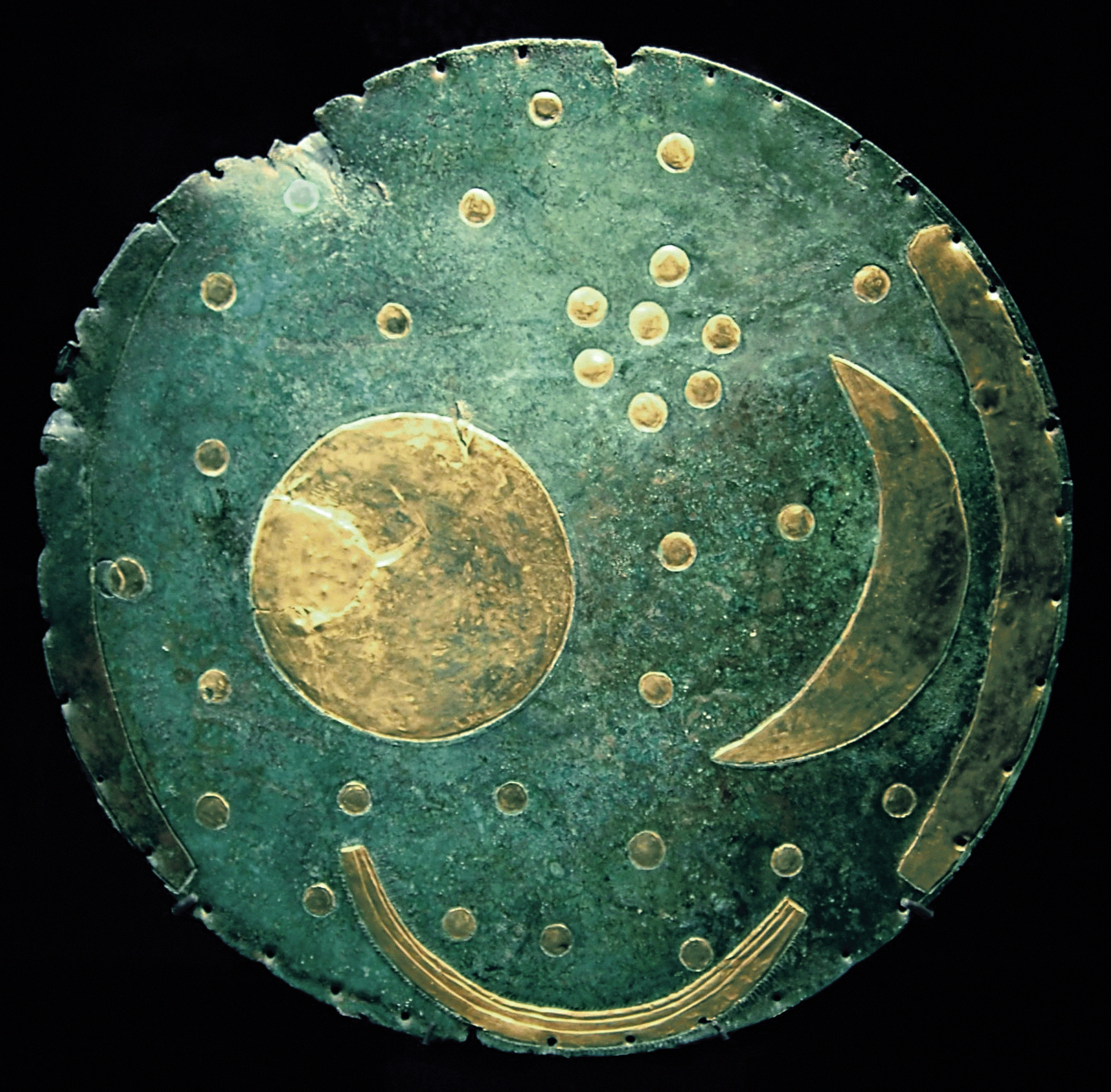
We have very little in the form of recorded information on early man's impression of the heavens, mostly some drawings of eclipses, comets, supernovae such as the Pueblo Petrograph (see below). However, early man was clearly frightened/overwhelmed by the sky. One of the earliest recorded astronomical observations is the Nebra sky disk from northern Europe dating approximately 1,600 BC. This 30 cm bronze disk depicts the Sun, a lunar crescent and stars (including the Pleiades star cluster).

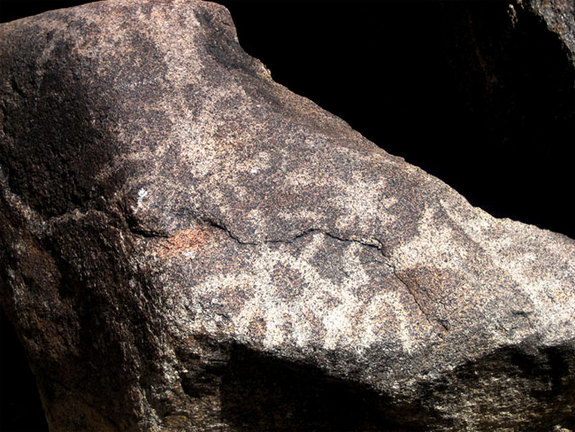
The earliest written records (i.e. history) were astronomical observations produced by the Babylonians (~1600 B.C.) who recorded positions of planets, times of eclipses, etc. There is also evidence of interest in astronomical phenomenon from early Chinese, Central American and North European cultures such as Stonehenge, which is a big computer for calculating the position of planets and the Sun (i.e. when to have that big blowout Solstice thing)
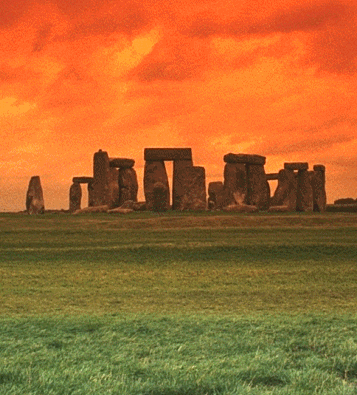
Thus, Astronomy was the 1st science, as it was the first thing we recorded observations for.
Later in history, 5,000 to 20,000 years ago, humankind begins to organize themselves and develop what we now call culture. A greater sense of permanence in your daily existences leads to the development of culture, where people develop narrative stories for cultural unity which we now call myths.


About 1,000 years later, the ancient Greeks inherited astronomical records from the Babylonians and applied the data to construct a cosmological framework. Data was not just used for practical goals, such as navigation, but also to think of new experiments, the origin of what we call natural philosophers.
Of the many natural philosophers before the time of Socrates (the Presocratics) was Thales (~480 B.C.). His combination of math and Babylonian data allowed him to predict eclipses.
Between the cosmological foundation set by the Presocratics and the world of Ideas introduced by Plato was a set of fundamental calculations on the size of the Earth, Moon, Sun and the distances between the nearby planets performed by Eratosthenes and Aristarchus (c. 250 BC). Using some simple geometry, these two natural philosophers were able to, for the first time, place some estimate of the size of the cosmos in Earth terms.
For a long time it was realized that the earth's surface was curved by people familiar with the behavior of incoming and outgoing ships. For it was obvious that as a ship passed over the horizon, the hull disappeared first, then the topmost sailing masts (although one could argue this is an effect of refraction in the atmosphere). Ancient astronomers could see with their eyes that the Sun and the Moon were round. And the shadow of the Earth, cast on the lunar surface during a lunar eclipse, is curved. A sphere is the simplest shape to explain the Earth's shadow (a disk would sometimes display a shadow shaped like a line or oval).
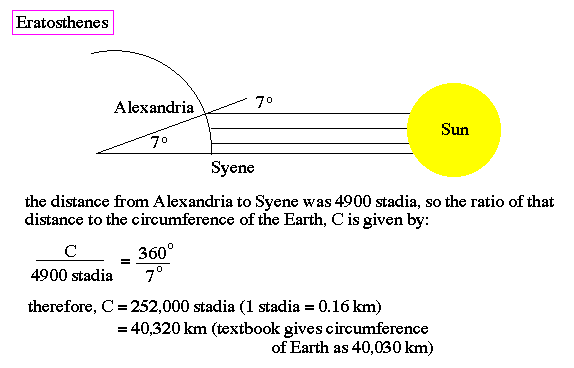
Hipparchus (100 B.C.) produced first star catalog and recorded the names of constellations.
During the times before the invention of the telescope, there were only seven objects visible to the ancients, the Sun and the Moon, plus the five planets, Mercury, Venus, Mars, Jupiter and Saturn. It was obvious that the planets were not on the celestial sphere since the Moon clearly passes in front of the Sun and planets Mercury and Venus can be seen to transit the Sun (the Sun passes in front of Mars, Jupiter and Saturn). Plato first proposed that the planets followed perfect circular orbits around the Earth (for the circle is the most perfect shape). Later, Heraclides (330 B.C.) developed the first Solar System model, placing the planets in order from the Earth it was is now called the geocentric solar system model and the beginning of the geocentric versus heliocentric debate.
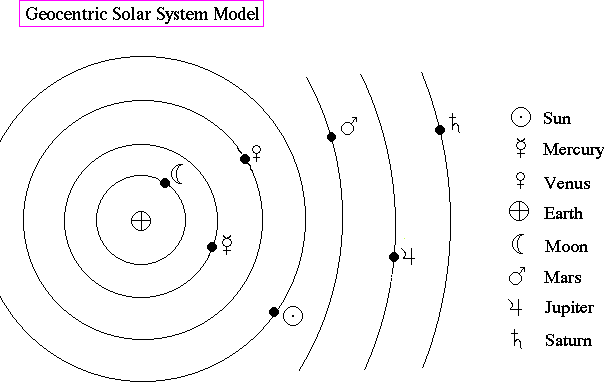
Slightly later, Aristarchus (270 B.C.) proposed an alternative model of the Solar System placing the Sun at the center with the Earth and the planets in circular orbit around it. The Moon orbits around the Earth. This model became known as the heliocentric model.
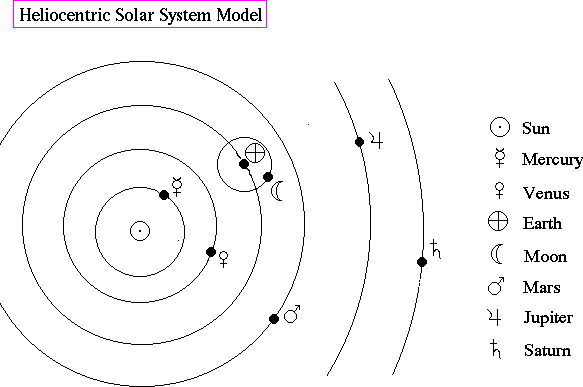
Problems for Heliocentric Theory:
While today we know that the Sun is at the center of the solar system, this was not obvious for the technology of the times pre-1500's. In particular, Aristarchus' model was ruled out by the philosophers at the time for three reasons:
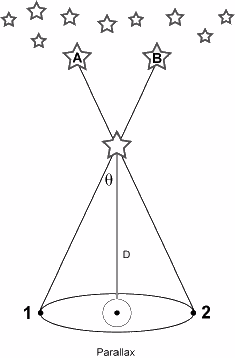
Of course, if all the stars are implanted on the crystal celestial sphere, then there is no parallax.
Ptolemy wrote a great treatise on the celestial sphere and the motion of the planets call the Almagest. The Almagest is divided into 13 books, each of which deals with certain astronomical concepts pertaining to stars and to objects in the solar system. It was, no doubt, the encyclopedic nature of the work that made the Almagest so useful to later astronomers and that gave the views contained in it so profound an influence. In essence, it is a synthesis of the results obtained by Greek astronomy; it is also the major source of knowledge about the work of Hipparchus, who made a map of the heavens and named the constellations.
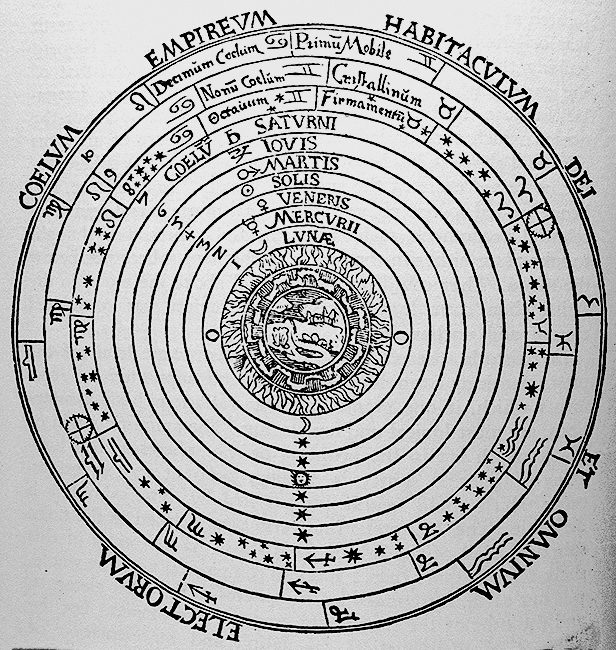
The Christian Aristotelian cosmos, engraving from Peter Apian's Cosmographia, 1524
In the first book of the Almagest, Ptolemy describes his geocentric system and gives various arguments to prove that, in its position at the center of the universe, the Earth must be immovable. Not least, he showed that if the Earth moved, as some earlier philosophers had suggested, then certain phenomena should in consequence be observed. In particular, Ptolemy argued that since all bodies fall to the center of the universe, the Earth must be fixed there at the center, otherwise falling objects would not be seen to drop toward the center of the Earth. Again, if the Earth rotated once every 24 hours, a body thrown vertically upward should not fall back to the same place, as it was seen to do. Ptolemy was able to demonstrate, however, that no contrary observations had ever been obtained.
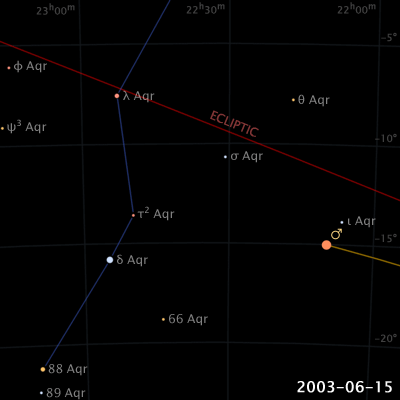
Ptolemy accepted the following order for celestial objects in the solar system: Earth (center), Moon, Mercury, Venus, Sun, Mars, Jupiter, and Saturn. However, when the detailed observations of the planets in the skies is examined, the planets undergo motion which is impossible to explain in the geocentric model, a backward track for the outer planets. This behavior is called retrograde motion.
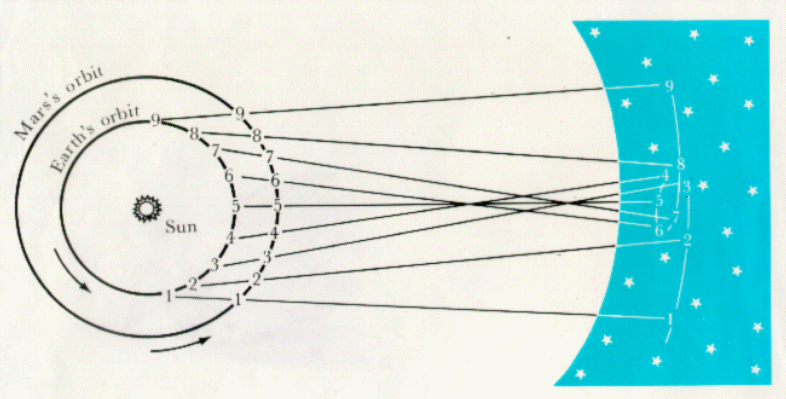
The solution to retrograde motion was to use a system of circles on circles to explain the orbits of the planets called epicycles and deferents. The main orbit is the deferent, the smaller orbit is the epicycle. Although only one epicycle is shown in the figure below, over 28 were required to explain the actual orbits of the planets.
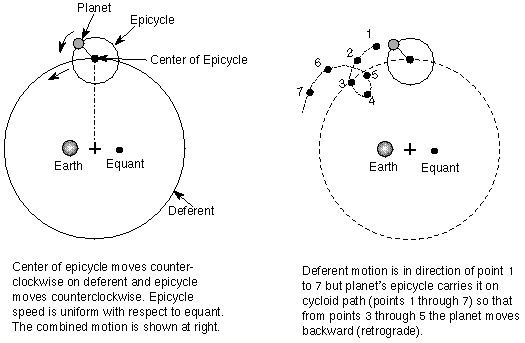
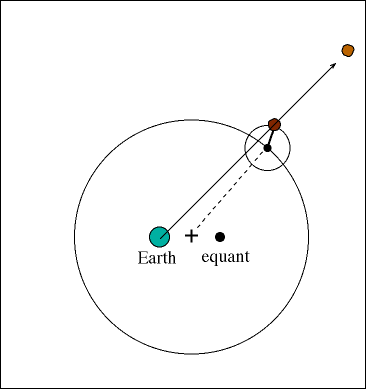

We know from history that the great library at Alexandria burns in 272 AD, destroying a great deal of the astronomical data for the time. Roman culture collapses and we enter the Dark Ages. But, the Roman Catholic Church absorbs Aristotle's scientific methods and Ptolemy's model into its own doctrine. Thus, preserving the scientific method and Ptolemy's Solar System. Unfortunately, the geocentric model was accepted as doctrine and, therefore, was not subjected to the scientific method for hundreds of years.
Until ... the Renaissance, where new ideas were more important than dogma.
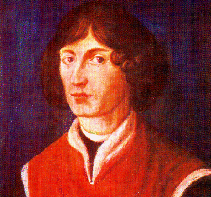

While Copernicus includes a rotating Earth in his heliocentric model, he continues to cling to Aristotle's celestial motions, i.e. orbits that are perfect circles (rather than their true shape, an ellipse). This forces Copernicus to adopt a series of moving sphere's for each planet to explain longitude motion. While Copernicus has fewer sphere's, since more of the retrograde motion is accounted for, his system is still extremely complicated in a computational sense. It's two greatest advantages is that it places the inferior planets near the Sun, naturally explaining their lack of large eastern or western elongations, and removing any extreme motions, such as that needed to explain durnal changes.
Copernicus also changes the immovable empyrean heaven into a fixed sphere of stars, severing theology from cosmology. However, Copernicus fails to produce a mechanically simple scheme for astrologers to cast horoscopes or astronomers to produce almanacs, for ultimately the tables he produces are as complicated as Ptolemy's and he did not publish all his results in the final edition of his work, "On the Revolutions of the Heavenly Spheres".
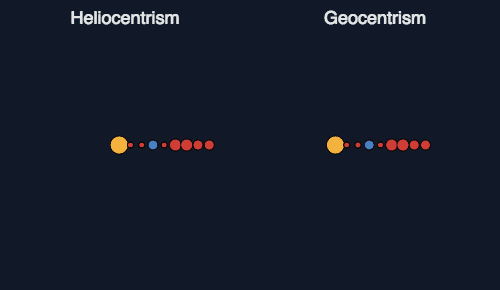
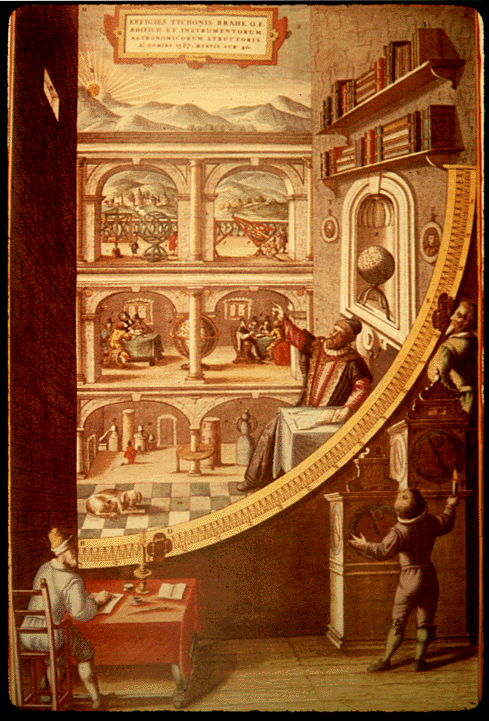
Tycho Brahe (1580's) was astronomy's 1st true observer. He built the Danish Observatory (using sextant's since telescopes had not been invented yet) from which he measured positions of planets and stars to the highest degree of accuracy for that time period (1st modern database). He showed that the Sun was much farther than the Moon from the Earth, using simple trigonometry of the angle between the Moon and the Sun at 1st Quarter.
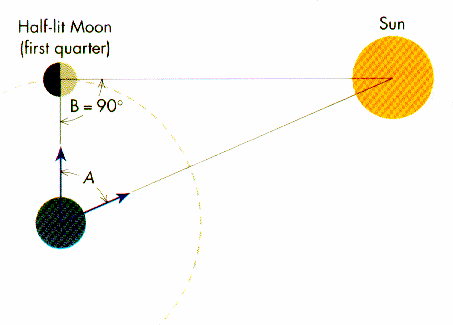
The Earth's motion, as a simple matter of dynamics, was extremely perplexing to the medieval thinker. The size and mass of the Earth was approximately known since Eratosthenes had measured the circumference of the Earth (thus, the volume is known and one could simply multiple the volume with the mean density of rock to obtain a rough mass estimate). The force required to move the Earth seemed impossible to the average medieval natural philosopher.
Brahe had additional reason to question the motion of the Earth, for his excellent stellar positional observations continued to fail to detect any parallax. This lack of annual parallax implied that the celestial sphere was "immeasurably large". Brahe had also attempted to measure the size of stars, not understanding that the apparent size of a star simply reflects the blurring caused by the passage of starlight through the atmosphere. Brahe's estimate for the size of stars would place them larger than the current day estimate of the size of the Earth's orbit. Such "titanic" stars are absurd according to Brahe's understanding of stars at the time.
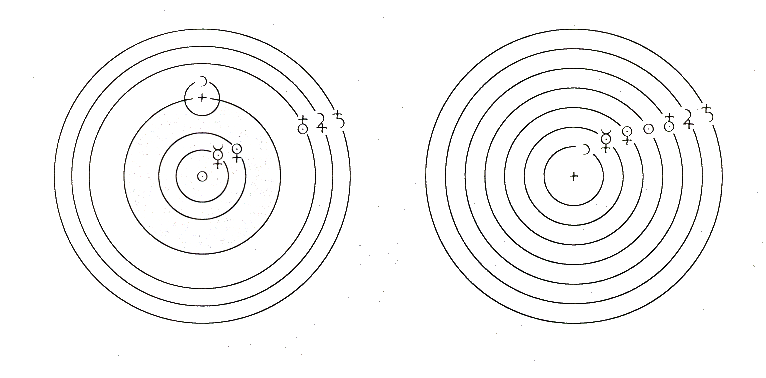
Beyond Tycho Brahe's accomplishments in the observational arena, he is also remembered for introducing two compromise solutions to the solar system model now referred to as the geoheliocentric models. Brahe was strongly influenced by the idea of Mercury and Venus revolving around the Sun to explain the fact that their apparent motion across the sky never takes them more than a few tens of degrees from the Sun (called their greatest elongation). The behavior of inner worlds differs from the orbital behavior of the outer planets, which can be found at any place on the elliptic during their orbital cycle.
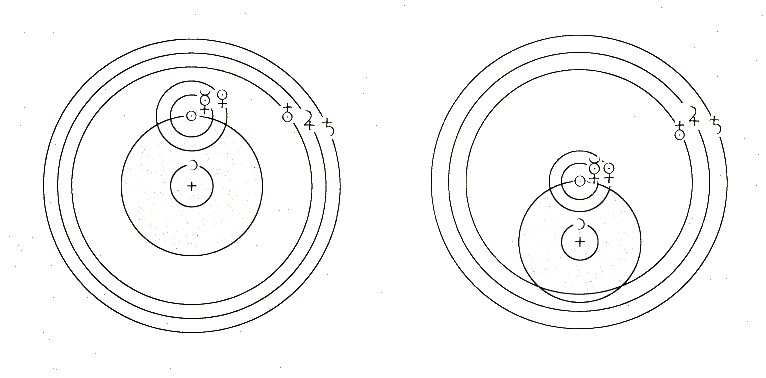
Brahe proposed a hybrid solutions to the geocentric model which preserves the geocentric nature of the Earth at the center of the Universe, but placed the inner planets (Mercury and Venus) in orbit around the Sun. This configuration resolves the problem of Mercury and Venus lack of large angular distances from the Sun, but saves the key criticism of the heliocentric model, that the Earth is in motion. In other works, Brahe's geoheliocentric model fit the available data but followed the philosophical intuition of a non-moving Earth.
Neither successfully predicts the motion of the planets. The solution will be discovered by a student of Tycho's, who finally resolves the heliocentric cosmology with the use of elliptical orbits.

Kepler (1600's) a student of Tycho who used Brahe's database to formulate the Laws of Planetary Motion which corrects the problems of epicycles in the heliocentric theory by using ellipses instead of circles for orbits of the planets.
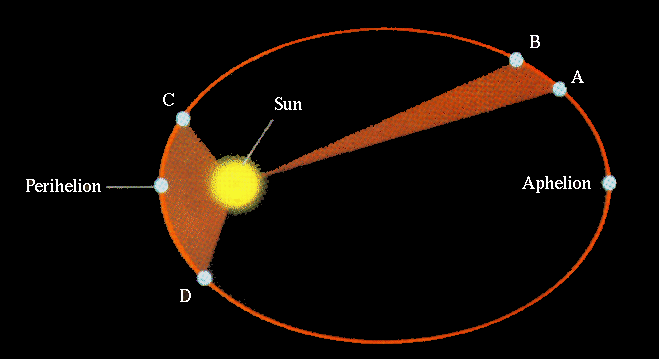
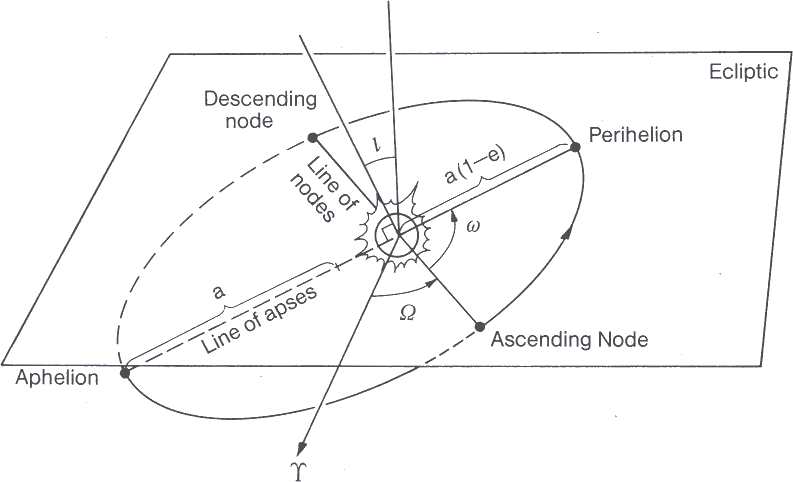

Galileo:
Kepler's laws are a mathematical formulation of the solar system. But, is the solar system `really' composed of elliptical orbits, or is this just a computational trick and the `real' solar system is geocentric. Of course, the answer to questions of this nature is observation.
The pioneer of astronomical observation in a modern context is Galileo. Galileo (1620's) developed laws of motion (natural versus forced motion, rest versus uniform motion). Then, with a small refracting telescope (3-inches), destroyed the the idea of a "perfect", geocentric Universe with the following 5 discoveries:
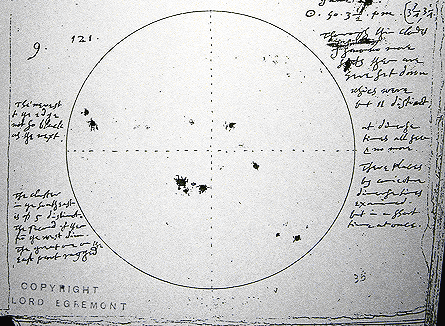
spots on the Sun

mountains and "seas" (maria) on the Moon
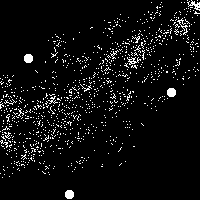
Milky Way is made of lots of stars

Venus has phases
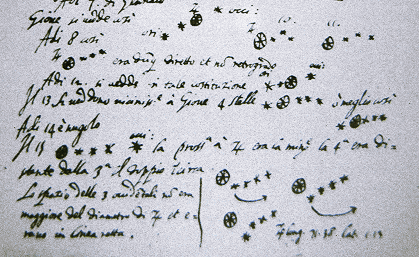
Jupiter has moons (Galilean moons: Io, Europa, Callisto, Ganymede)
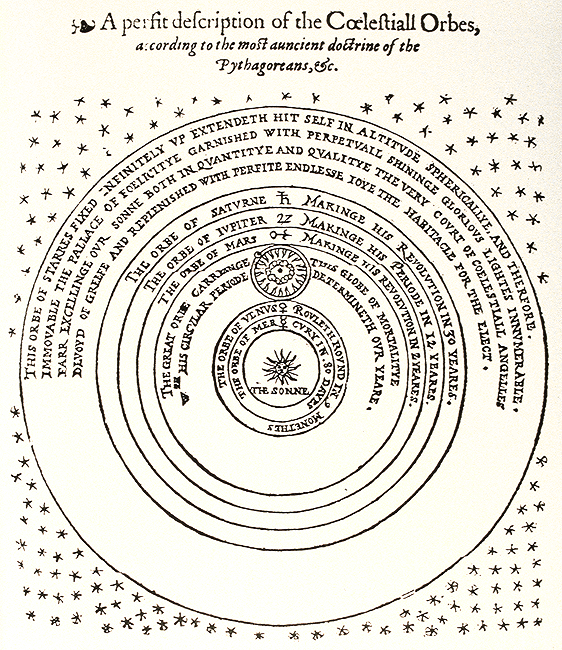
... off to the 18-20th century, with discovery of the outer planets and where astronomy moves towards discoveries in stellar and galactic areas, next paradigm shift occurs in early 1960's with NASA deep space probes

|
|

|